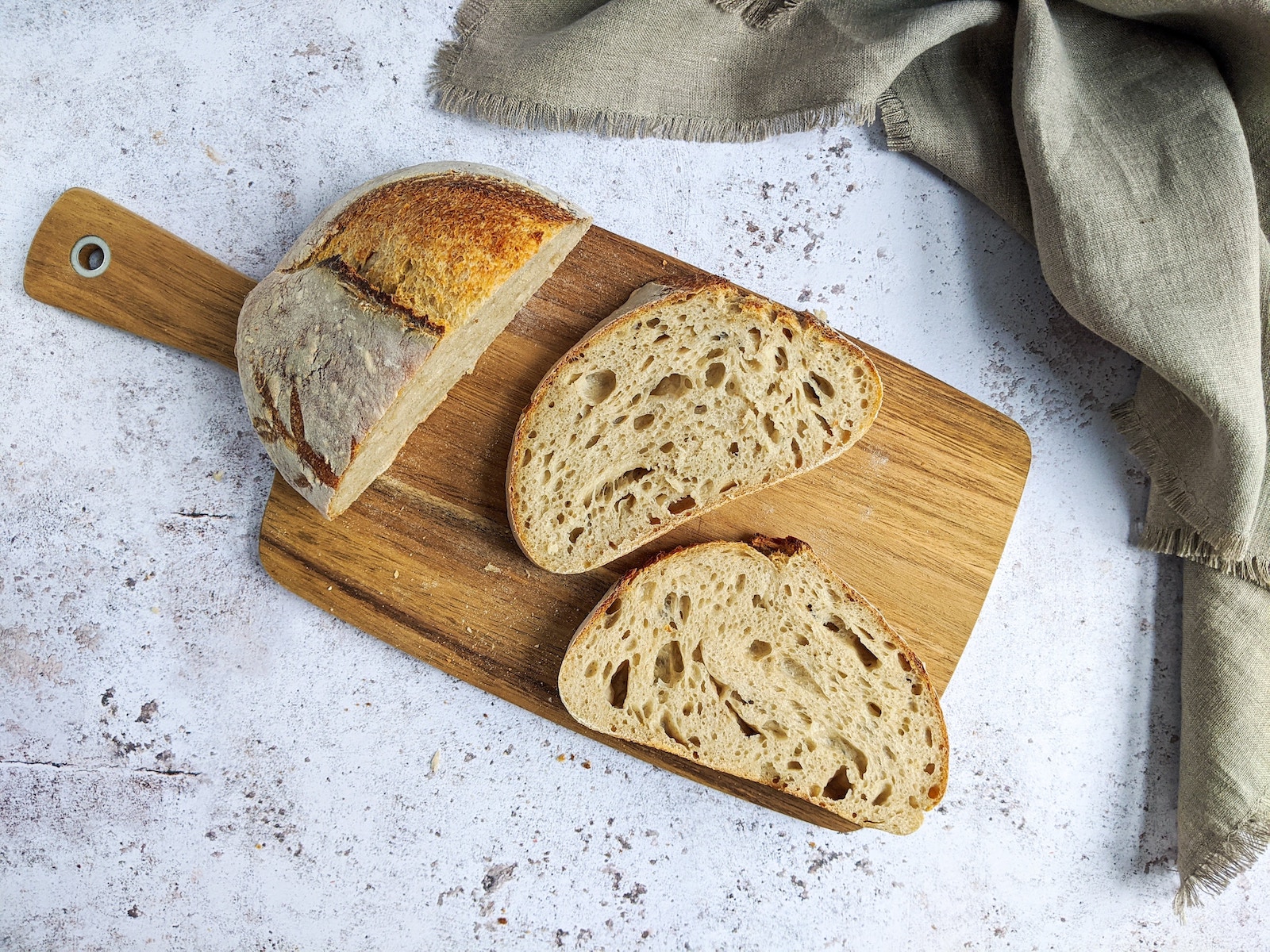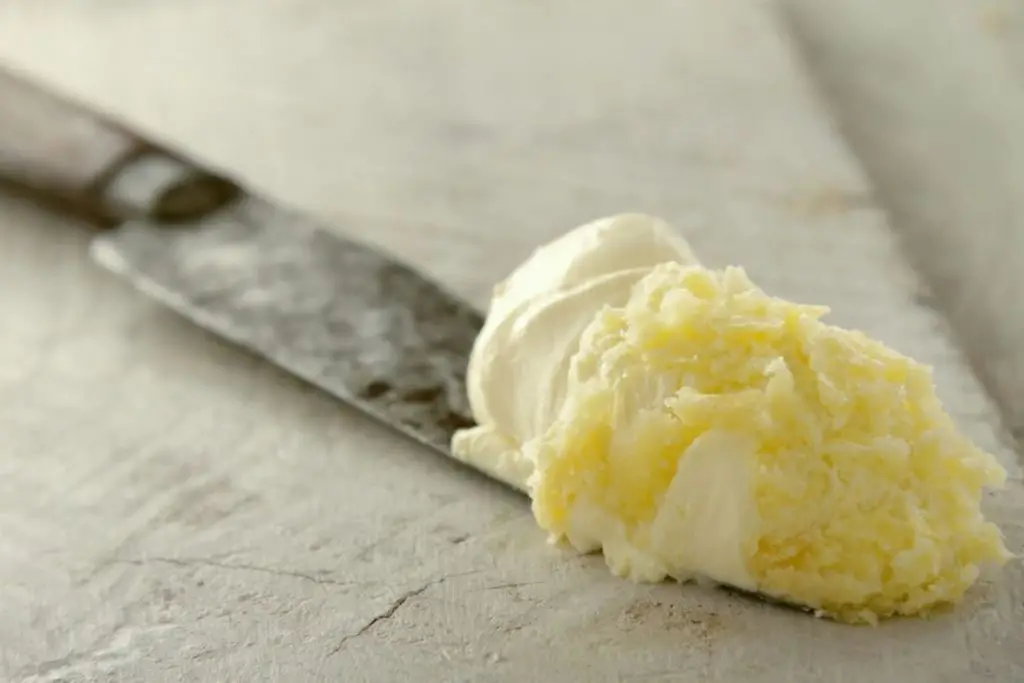
Sourdough bread is a delicious and nutritious type of bread that can be enjoyed in many ways. However, if you find yourself with more sourdough bread than you can eat before it starts to go stale, freezing it can be a great way to extend its shelf life. Freezing sourdough bread is an easy and convenient process that can help you always have fresh bread on hand for toast, sandwiches, or any other recipe. In this response, we will explore how to properly freeze sourdough bread to ensure it retains its texture and flavor when thawed.
To freeze sourdough bread, follow these simple steps:
- Step 1: Allow the bread to cool completely before freezing
- Step 2: Slice the bread before freezing
- Step 3: Wrap the bread tightly in plastic wrap
- Step 4: Place the wrapped bread in a freezer-safe container
- Step 5: Label the container or bag
- Step 6: Place the container or bag in the freezer
- Step 7: Unfreeze your sourdough bread
Step 1: Allow the bread to cool completely before freezing
The first step in freezing sourdough bread is to allow it to cool completely before freezing. This is an important step because if you freeze warm or hot bread, the moisture inside the bread will condense and form ice crystals when it’s placed in the freezer. This can cause the bread to become soggy and lose its texture and flavor when thawed.
Therefore, it is recommended to let the bread cool down to room temperature after baking or purchasing it before slicing, wrapping, and freezing it. This also gives the bread time to settle and firm up, which helps to maintain its shape and texture during the freezing process. By allowing the bread to cool completely, you ensure that it freezes properly and maintains its quality when thawed.
Step 2: Slice the bread before freezing
The second step of freezing sourdough bread is to slice it before freezing. This is an important step because it allows you to easily remove the desired amount of bread from the freezer and avoid having to thaw the entire loaf each time you want to use it.
When slicing the bread, it is recommended to slice it into portions that you are likely to use in a single sitting.
Should I freeze my sourdough bread whole or sliced?
It is up to your personal preference whether you want to freeze your sourdough bread whole or sliced. However, it is recommended to slice the bread before freezing it as it makes it easier to thaw and reheat smaller portions. Additionally, sliced bread tends to freeze and thaw more evenly. If you freeze the bread whole, it may take longer to thaw and may not be as evenly reheated as sliced bread.
Step 3: Wrap the bread tightly in plastic wrap
The third step of freezing sourdough bread is to wrap each slice or portion tightly in plastic wrap. This is an important step because it helps to prevent freezer burn and moisture loss, which can cause the bread to become dry, tough, and lose its flavor.
When wrapping the bread, it is important to ensure that there is no exposed surface area. This means wrapping each slice or portion tightly with enough plastic wrap to cover the entire surface area, including the top, bottom, and sides of the slice or portion. Any exposed areas can lead to freezer burn, which is caused by the exposure of the bread to air and can result in a brown, dry, and unappealing texture.
By wrapping each slice or portion tightly, you also prevent moisture loss, which can cause the bread to become dry and hard. This is because when food is stored in the freezer, the moisture inside the food turns into ice crystals, which can cause the food to become dehydrated over time. By preventing moisture loss, you ensure that the bread retains its texture and flavor when thawed.
Is it better to freeze sourdough bread in paper or plastic?
It is better to freeze sourdough bread in paper rather than plastic. Plastic can trap moisture, which can lead to the bread becoming soggy and losing its texture. Paper, on the other hand, allows the bread to breathe and helps to prevent it from getting too moist. Additionally, paper is more environmentally friendly than plastic.
Step 4: Place the wrapped bread in a freezer-safe container
The next step in freezing sourdough bread is to place the wrapped slices or portions in a freezer-safe container or plastic bag. This step is important because it helps to protect the bread from getting crushed.
A good freezer-safe container for sourdough bread is an airtight container that is large enough to hold the bread without crushing it. Some good options include plastic freezer bags, plastic containers with tight-fitting lids, and glass containers with airtight lids
Step 5: Label the container or bag
The fourth step of freezing sourdough bread is to label the container or bag with the date and type of bread. This is an essential step to help you keep track of the bread in the freezer and ensure that you use them before they expire.
By labeling the container or bag with the date, you can keep track of how long the bread has been in the freezer. This will help you avoid using stale or freezer-burnt bread, which can affect the taste and quality of your dish. Labeling the container or bag with the type of bread is also helpful, especially if you have different types of bread in the freezer. This will help you easily identify the bread you need when you’re ready to use them and avoid the hassle of sorting through them all.
To label the container or bag, write the date and type of bread on a label or piece of tape, and stick it to the container or bag. Make sure the label is clear and visible to avoid any confusion later on.
Step 6: Place the container or bag in the freezer
The final step of freezing sourdough bread is to place the container or bag in the freezer. Make sure the container or bag is level and not overcrowded. This is an important step to ensure that the bread is stored properly to maintain its quality when thawed.
When placing the container or bag in the freezer, it is important to ensure that it is level and not overcrowded. Overcrowding the freezer can affect the temperature and cause the bread to lose its texture and flavor. Make sure that the container or bag is placed in a spot in the freezer that is not exposed to fluctuating temperatures, such as near the door or on top of other items.
Step 7: Unfreeze your sourdough bread
Reheating sourdough bread in the oven is recommended because it helps to revive the crust and make it crispy again. Also, it helps to re-crisp the bread and makes the crumb soft and moist on the inside. The heat from the oven will distribute evenly and gently warm up the bread, making it taste just as fresh as the day it was baked. Reheating in the oven also helps to avoid over-drying the bread, which can happen when using a microwave or toaster.
How to unfreeze sourdough bread?
To unfreeze sourdough bread, you should follow these steps:
- Take the frozen sourdough bread out of the freezer and let it thaw for 30-60 minutes at room temperature.
- Preheat your oven to 350°F (180°C).
- Once the bread has thawed, remove any plastic wrap or packaging.
- Place the bread in the preheated oven and bake it for 10-15 minutes until it is crispy on the outside and warm on the inside.
- Remove the bread from the oven and let it cool for a few minutes before slicing and serving.
Note: If you prefer a softer crust, you can wrap the bread in foil before baking it.
Can I bake sourdough bread straight from the freezer?
Technically, sourdough bread can be baked straight from the freezer, but it is not recommended. This is because the bread may not rise properly and the texture may be affected. It is best to thaw the bread first and then reheat it in the oven.
Other related questions
How long can I freeze my sourdough bread before it goes bad?
Sourdough bread can be stored in the freezer for up to three months before it starts to lose its flavor and texture. After this time, the bread may become stale, dry, and lose its quality. It is recommended to label the bread with the date it was frozen to ensure it is consumed before the quality deteriorates.
How can I prevent my frozen sourdough from becoming soggy?
To prevent frozen sourdough from becoming soggy, it’s important to let it cool completely before freezing and to wrap it tightly in airtight packaging. Avoid storing it in plastic bags or containers that can trap moisture. When reheating, use a method that will help crisp up the crust, such as using a hot oven or toaster oven.
How many times can I freeze and thaw my sourdough bread before its quality is affected?
Sourdough bread can be frozen and thawed multiple times without significant quality loss, but it’s best to limit it to one or two cycles. Each freeze-thaw cycle causes some moisture loss and can affect the texture and flavor of the bread. For best results, freeze sourdough bread only when necessary and consume it as soon as possible after thawing.
Do you feed sourdough before freezing?
It is not necessary to feed sourdough before freezing, as the yeast and bacteria will become dormant in the freezer. However, it is recommended to use fully matured sourdough for freezing, as this will help preserve the quality of the bread.
Why is my sourdough bread hard after freezing?
Sourdough bread can become hard after freezing due to the formation of ice crystals, which can damage the gluten structure. To prevent this, it is important to wrap the bread tightly and use a freezer-safe container. Reheating the bread in the oven can also help restore its texture.
Why does sourdough bread go bad so fast?
Sourdough bread contains natural yeast and bacteria, which can cause it to spoil faster than commercially made bread. The lack of preservatives also contributes to a shorter shelf life.
Can I eat 2 weeks old sourdough bread?
It is generally not recommended to eat sourdough bread that is more than a week old, as it can become stale or develop mold. However, if the bread has been properly stored in the freezer, it may still be safe to consume after two weeks.








